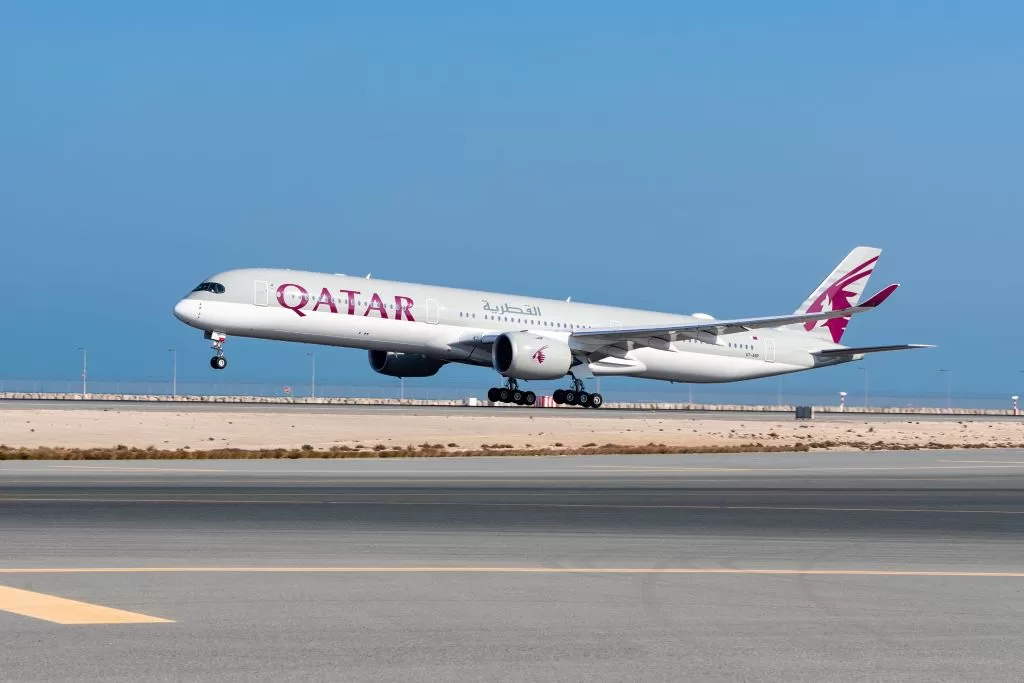Mildly interesting to absolutely amazing – the wonders of flight
Just over 120 years ago an event lasting 12 seconds and covering just 36 metres changed the world forever, when Orville Wright piloted the first powered flight.
Later, with his brother Wilbur at the controls, the wood and muslin aircraft flew 255.6 metres in 59 seconds – the longest, most sustained flight that day.

Today modern jet aircraft criss-cross the globe covering thousands of kilometres, connecting destinations around the world in hours.
But although flying is relatively commonplace, the wonder of flying continues to enthral many of us – whether we’re seasoned travellers looking out the window as continents slip by below us, or children gasping in amazement as a huge jet powers down the runway and lifts into the sky.

Serving more than 170 destinations worldwide from its award-winning Doha hub, Hamad International Airport, Qatar Airways’ crew spend a lot of time experiencing modern flight. Here are some of their interesting, amazing and quirky facts and observations.
What does Sir Isaac Newton have to do with how modern jet engines work?
Contrary to what some people think, the big blades at the front of modern turbo fan engines aren’t sucking all the air into the engine so it can be combusted.
While some air is mixed with fuel and ignited and powers the turbine and compressor blades, most of the air bypasses the combustion chamber, although it’s compressed before being blown out the back.

By compressing the air, the engine effectively gives it a massive push backwards and in turn the expelled air gives the aircraft the same amount of thrust forward. This is where Newton’s third law comes into play – for every action (force) in nature there is an equal and opposite reaction.
Compared to earlier turbojet engines, which sucked in air, compressed it and ignited the fuel-air mixture, modern turbofan engines, also known as bypass engines, are more efficient, powerful and quieter. A modern 777 engine produces between 360 and 510 kilonewtons of thrust – and there are two of them.
To put this in perspective a newton is the amount of force needed to accelerate one kilogramme by one metre per second in one second. A sportscar accelerating from 0 – 100 kph in three seconds would need only 18 kilonewtons of thrust.
What does cabin pressure have to do with a nice cup of tea?
Tea aficionados will tell you that to make a proper cup of tea, you first need to boil the water, which means getting it up to 100oC. Unfortunately, that can’t happen on an aircraft flying 11km up.
The reason is that the cabin is pressurised to around 2 400 metres above sea level. When water boils molecules in the liquid are moving fast enough to escape into the air in the form of steam. At sea level there’s more air pressure, so water boils at a higher temperature – 100oC. By contrast, in the pressurised cabin the water boils at around 90oC and no matter what the cabin crew do, or how long they boil it, the water won’t get any hotter.
Can modern jet aircraft break the sound barrier?
No, but it’s relative.
A Boeing 777 cruises at around 905kph. The speed of sound isn’t absolute but depends on the conditions. At the 777’s cruising altitude the sound barrier would be around 1 062kph.
The airspeed of an aircraft is determined by how fast it’s going relative to the surrounding air, not its speed over ground. The 905kph is how fast the aircraft is flying compared to the air around it.
Should there be a tailwind of 200kph and someone on the ground with a radar speed gun was able to get a reading off the aircraft, they might think it was travelling faster than the speed of sound, as the combined airspeed and tailwind would provide a reading of 1 105kph.
While this is the speed over ground, as opposed to how fast the aircraft is actually travelling relative to the surrounding air, from this perspective it would appear to be flying faster than speed of sound at that altitude, even though the aircraft is not technically breaking the sound barrier.
What are contrails?
Whether you look out your window or are looking up from the ground, you may occasionally notice, long, straight white trails across the sky. These are called contrails – a contraction of condensation trails – also sometimes called vapour trails.
They are, in effect, long clouds and are formed when water vapour from the engines meets cold air and condenses to form water droplets or ice crystals.
In just over a century aviation has gone from a few short, powered flights at a beach in Kitty Hawk to and industry worth just under US$2 billion, connecting people and facilitating commerce around the world.
And for many, including the Qatar Airways Gold Privilege Club member settling into a QSuite seat, the young student on a first overseas adventure or the cabin crew member greeting embarking passengers, it’ll never lose its wonder.
About Qatar Airways
A multiple award-winning airline, Qatar Airways won the ‘World’s Best Business Class’ for the tenth time at the 2023 World Airline Awards, managed by the international air transport rating organisation, Skytrax. The airline continues to be synonymous with excellence, also taking home, ‘Best Airline in the Middle East’, ‘World’s Best Business Class Lounge’ and ‘World’s Best Business Class Lounge Dining’ at the prestigious awards held during the 2023 Paris Air Show. Qatar Airways is an unprecedented seven-time winner of the ‘World’s Best Airline’ voted by Skytrax (2011, 2012, 2015, 2017, 2019, 2021 and 2022). As leaders in industry innovation and digital adoption, Qatar Airways was recently voted the ‘World’s Best Airline Website’ by World Travel Tech Awards.
Qatar Airways was the first Airline in the Middle East to be certified to the highest level of IATA’s Environmental Assessment (IEnvA) programme, based on recognised environmental management system principles (such as ISO 14001). As an inaugural signatory to the Buckingham Palace Declaration in March 2016, Qatar Airways became the first airline globally to be certified to the industry standard for the prevention of illegal wildlife trafficking in aviation.
Qatar Airways currently flies to nearly 170 destinations worldwide, connecting through its Doha hub, Hamad International Airport, the ‘World’s Best Airport’, as voted by Skytrax in 2021, 2022, and 2024. In 2024, Hamad International Airport also received the ‘Best Airport in the Middle East’ accolade for 10 consecutive years, as well as ‘World’s Best Airport Shopping’ for the second year in a row.




























